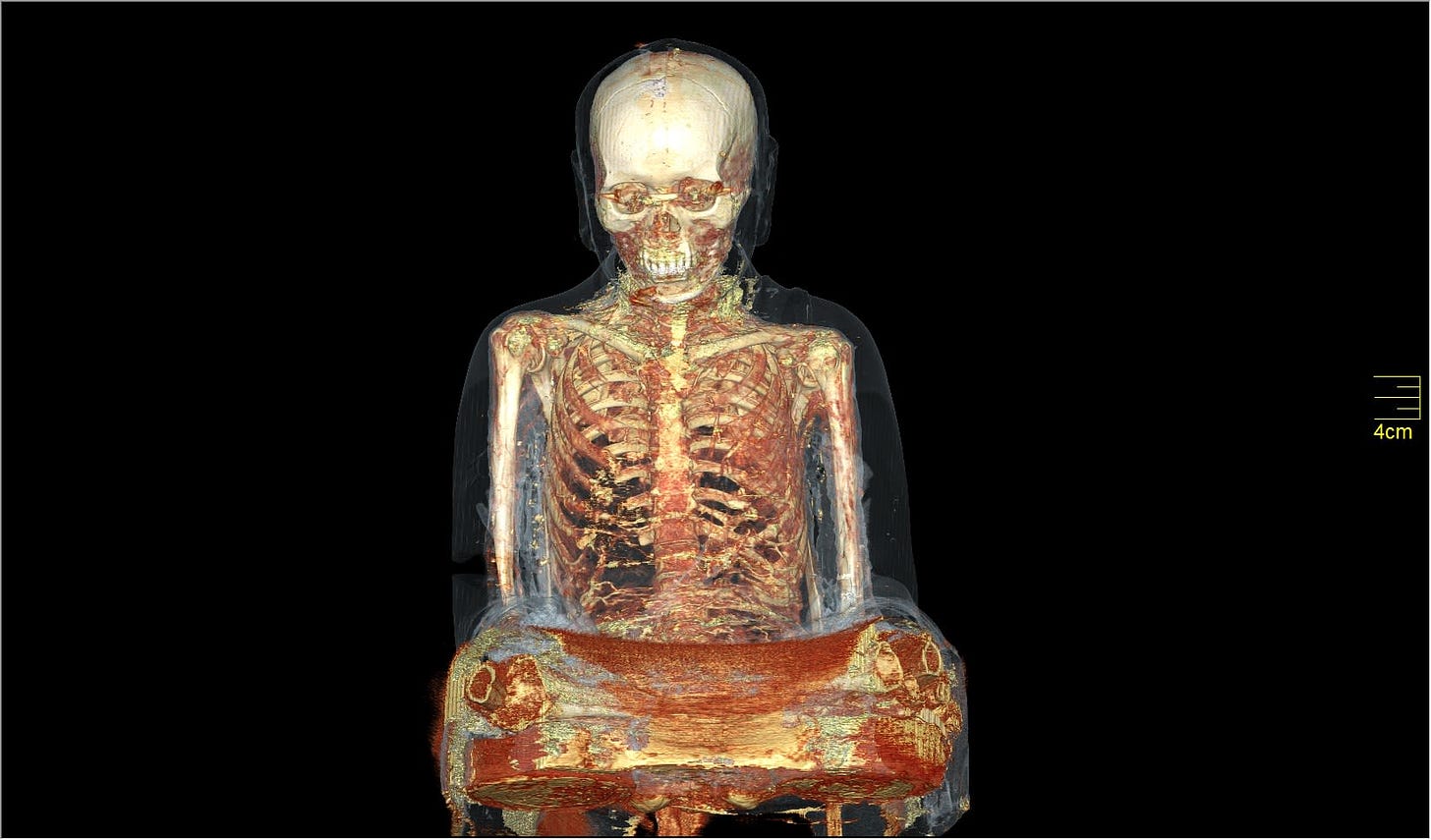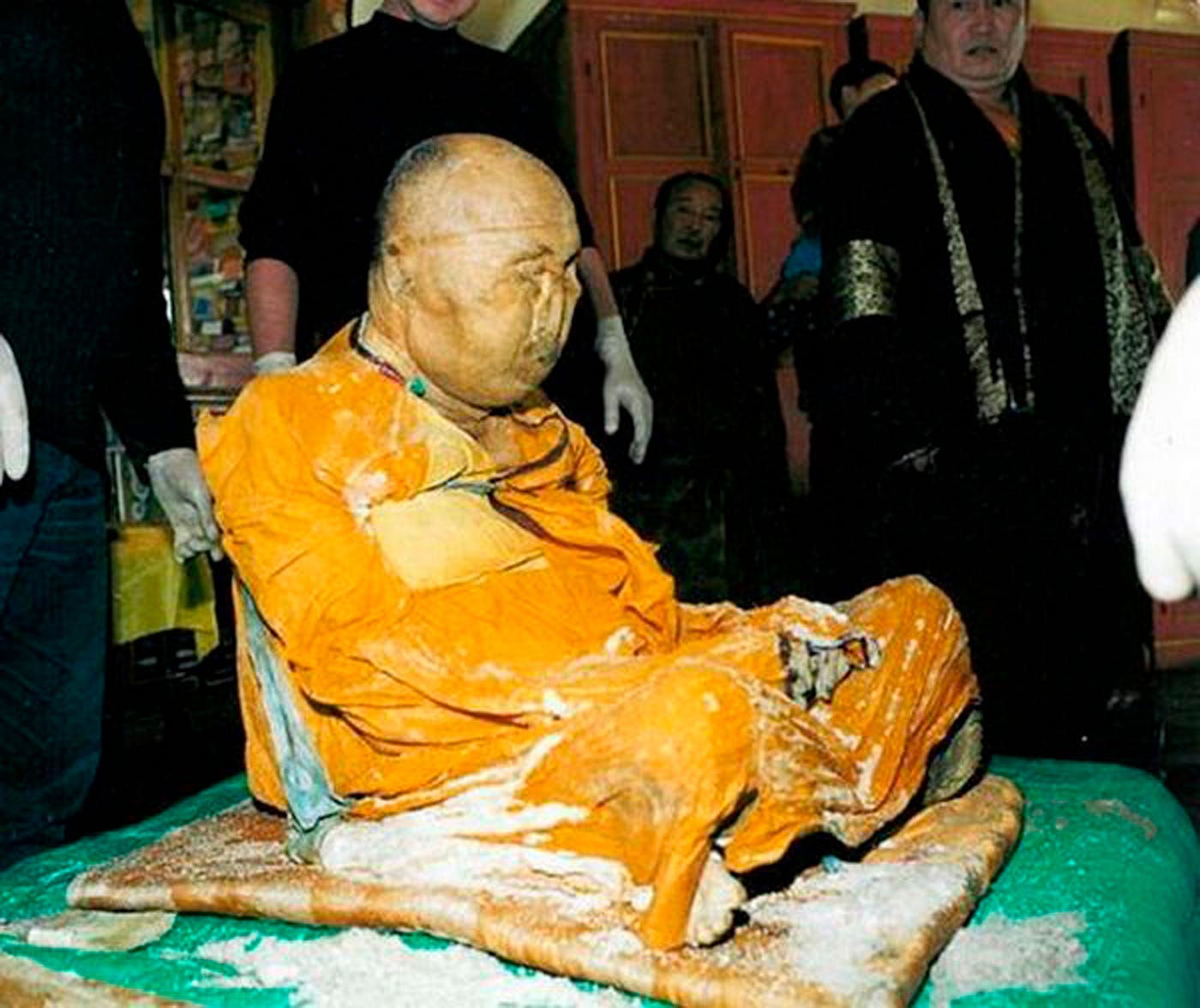The Peculiar Files: The Mummified Monk Who May Still Be Alive
"In 2015, researchers x-rayed a golden Buddha statue and discovered something no one expected, a perfectly preserved monk inside."
Hey guys, now today i have a new addition to the newsletter, The Peculiar Files. I hope you like the name. :D I wanted to bring forward a portion where I could just write singularly and in depth about real different and interesting stories this world has to offer.
So here it is and I hope you all enjoy!
Lets go!
A private collector brought the monk to a restoration lab in the Netherlands, and conservators performed routine scans on a centuries-old Buddha statue when the impossible appeared on the screen.
Now inside the statue, hidden beneath layers of lacquer and gold, was literally a mummified human body. Perfectly seated in the lotus position, arms relaxed, spine straight. The remains were so intact, so precise, that the man appeared less dead and more… waiting.
This wasn't just any statue. And it wasn't just anybody.
It was Liuquan, a Buddhist monk believed to have lived over 1,000 years ago and who may have mummified himself alive.
Who Was Liuquan?
Historians believe Liuquan belonged to the Chinese Meditation School, a spiritual lineage that practiced extreme asceticism in pursuit of enlightenment. His remains, hidden inside the statue, were not discovered until nearly a millennium later when the statue was brought to Europe and eventually x-rayed.
The scan revealed a human skeleton in a meditative posture, as well as rolled scrolls and paper talismans placed where Liuquan's organs once were. This wasn't just a burial, it was a ritual.
Liuquan is thought to have undergone a rare and intense Buddhist ritual called sokushinbutsu, this is a process by which monks intentionally mummify themselves alive in an act of spiritual mastery.
I’ll break this down,
Years of Preparation: Monks would begin by removing all fat from their bodies through a strict diet of nuts, seeds, roots, and tree bark.
Toxic Tea: They would then drink a poisonous sap from the urushi tree, which helped preserve the body by killing off maggots and bacteria after death.
Live Burial: When ready, the monk would descend into a stone chamber, assume the lotus position, and be sealed inside with a breathing tube and a bell.
Final Silence: Each day, the monk would ring the bell to signal he was still alive. One day, the bell would stop. The tube would be removed. The tomb sealed.
If the monk's body remained preserved after death — and didn't decay — it was seen as proof of enlightenment.
Only a few dozen such mummies have ever been documented. Liuquan may be the only one ever hidden inside a statue.
Here's where things get real weird.
Some modern Buddhist practitioners claim Liuquan is not dead, but in a deep state of meditation, so profound that the body simply... stopped needing to move. To them, he is a "Living Buddha" — not a corpse, but a teacher, frozen in time.
It's a belief not entirely dissimilar from certain Tibetan traditions, where advanced monks are said to suspend bodily function for months, even years.
Even Western scientists were stunned by the level of preservation. The statue contains skin, muscle, and bone, all remarkably intact after a thousand years without embalming or modern preservation.
The statue was exhibited in Hungary as part of a touring show called "Mummy World" — until Chinese officials claimed it had been stolen from a temple in Fujian province. They demanded its return, saying Liuquan was not a museum piece, but a revered spiritual figure.
Controversy followed. Was this artifact sacred or scientific? A relic or a person? And who has the right to own a body that may not even be "dead"?
As of now, the statue's exact whereabouts are unclear, reportedly held in private hands, out of public view.
Now, what does it mean to die on your own terms? Was Liuquan's goal to escape mortality or transcend it? And if a monk can sit in meditation for a thousand years, unchanged, unmoving… is it time we redefine what "life" even means?
Thank y'all for reading, I hope you enjoyed the first edition of the peculiar stories, let me know!
I'll be back in your inbox again soon!




